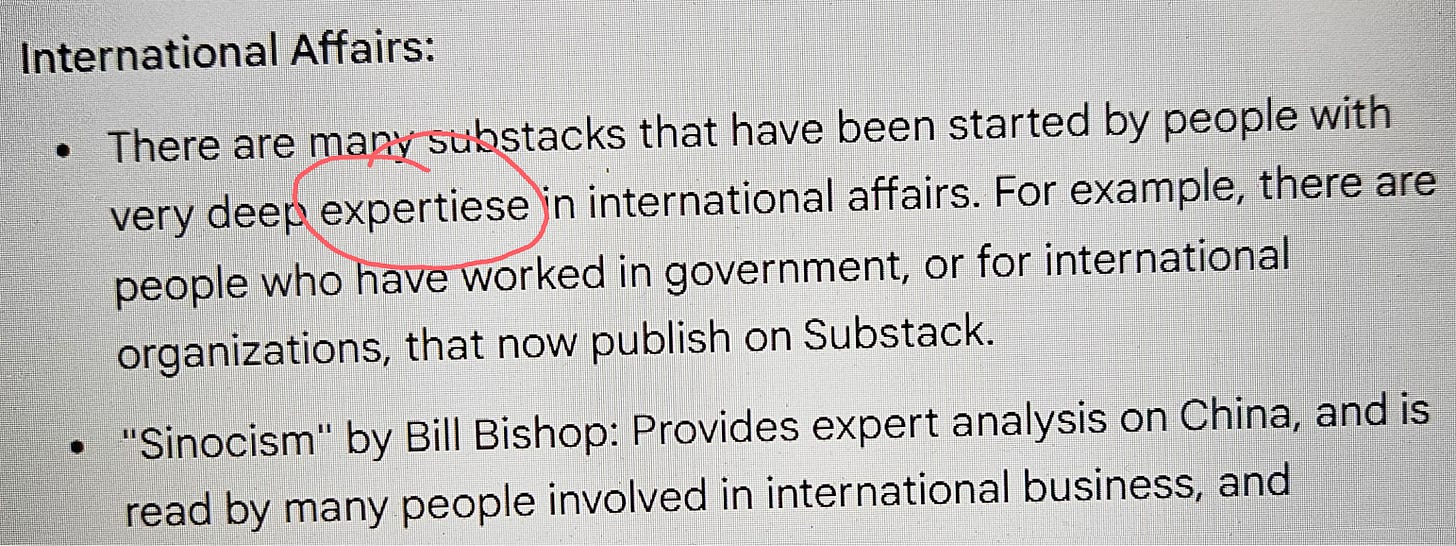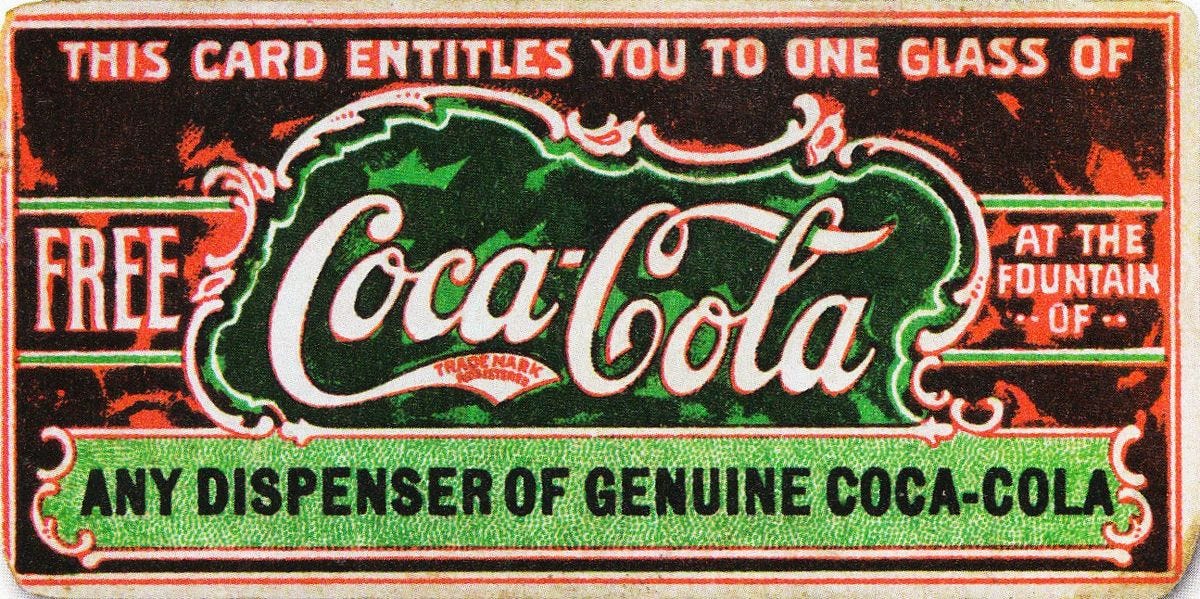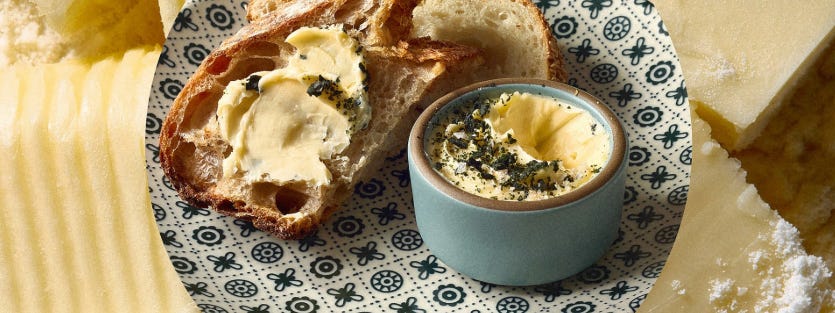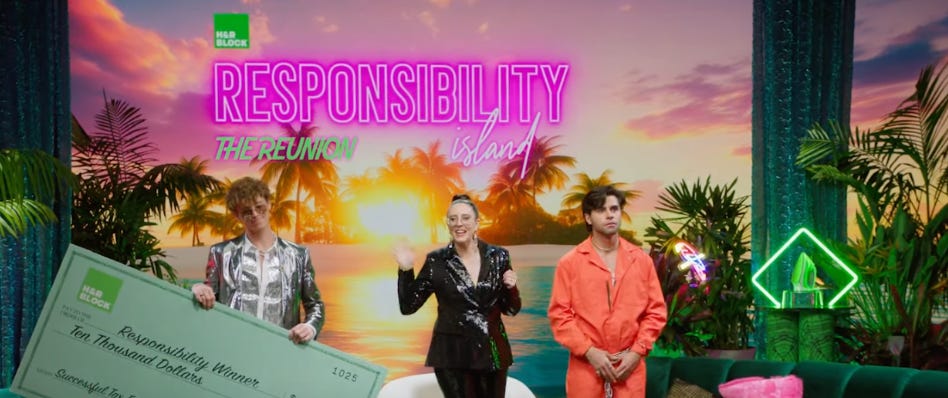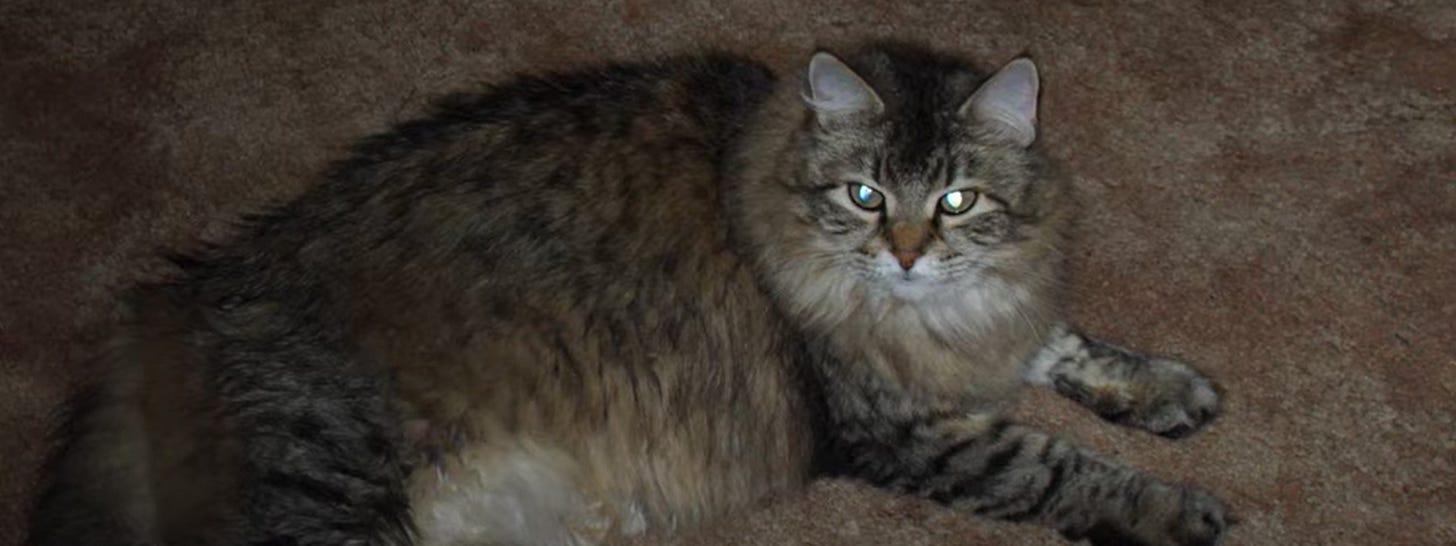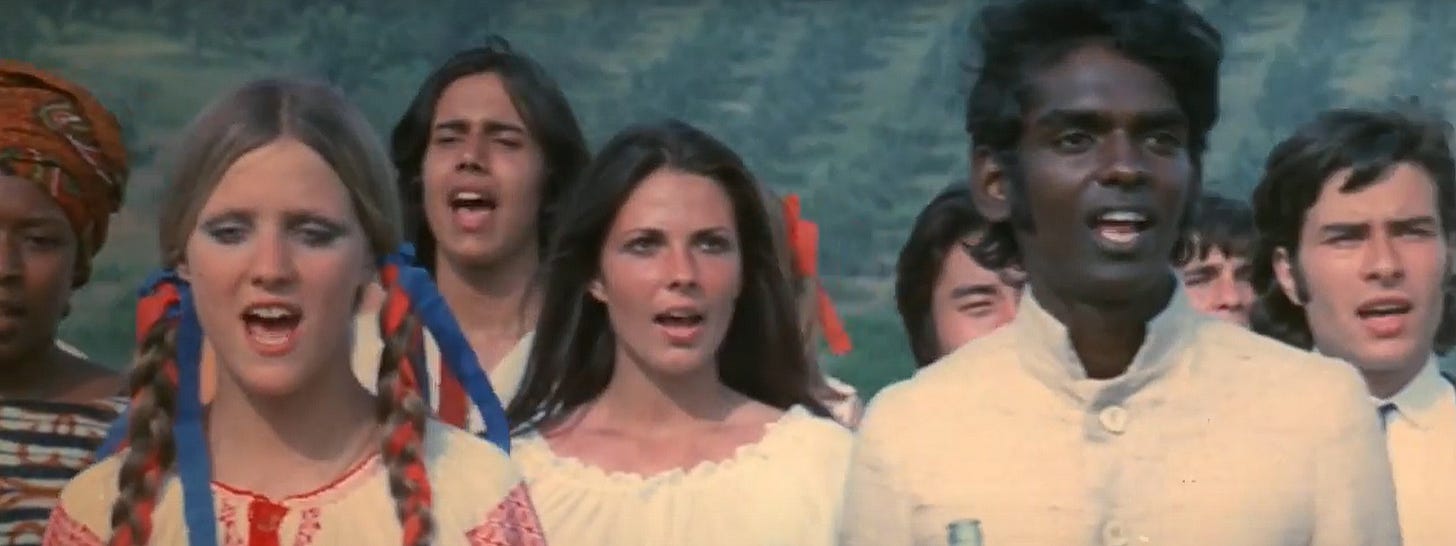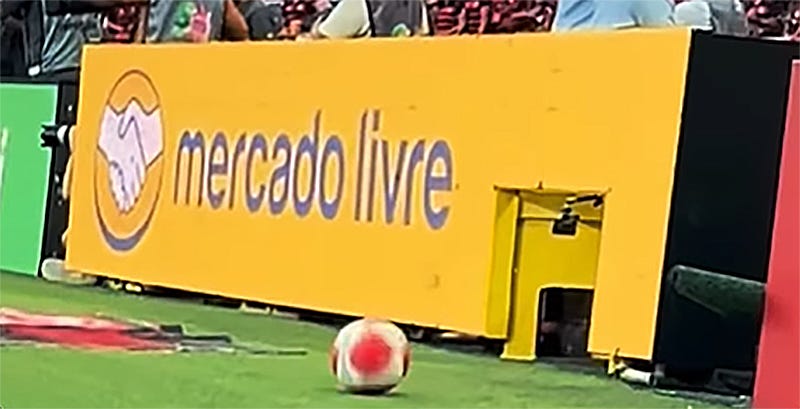Buttery sustainability, jingles turned singles, and the chatbot that made a spelling mistake
Imperfect copying
I was doing some research last week and asked Google’s Gemini LLM chatbot a question. The answer contained a spelling mistake. I did a double-take. Ironically, the misspelt word was “expertise”. Here’s a screenshot:
A couple of days later I began to doubt my own eyes, so I went back into my Gemini history and the mutant word was still there, freakish like a two-headed goat and ominous like a new comet. What could it possibly mean, this AI-generated expertiese? Glitch or harbinger?
We all know that chatbots make stuff up. This is because there’s no real intelligence under the hood, just an incredibly sophisticated brute-force algorithm based on the entirety of the internet. In theory, this should smooth out discrepancies in predictions, but in practice, it leads to unexpected outputs known as hallucinations. These are fabrications expressed in complete confidence as truth. Students, lawyers, and airlines have all discovered to their cost that chatbots can spew out fiction instead of fact. But a spelling mistake? That just shouldn’t happen. So... is the misspelling by Gemini a random occurrence or the first hairline crack in the AI edifice?
Whatever the answer, I had already planned this intro before expertiese jumped off the screen. And the subject of my piece was the benefits of imperfect copying.

I wouldn't be here to write Discomfort Zone and you wouldn’t be here to read it if it wasn’t for imperfect copying. All life on earth stems from genetic mutations due to the inaccurate replication of DNA molecules. And on a cultural and technological level, many useful discoveries have been made by accident when a mistake occurred in copying a text or a formula.
The reason copyright laws exist is to govern the reproduction of unique creative works. This is what make it illegal to copy a movie, song, or book that is still under copyright. Besides, copying just feels wrong. It’s like cheating or theft: someone does the hard work and then some other lazy or unscrupulous individual profits from it. But there’s no doubt that humanity’s cultural and technological evolution has been given many pushes down propitious pathways through copying gone awry.
To take a famous example from the history of American capitalism, Coca-Cola was created when a Civil War veteran called John Pemberton attempted to recreate a French drink called Vin Mariani. He was forced to alter his version when Atlanta prohibited alcohol in the late nineteenth century. By adding kola nuts and carbonation to the Vin Mariani formulation, he gave his copy an extra caffeine kick and a bubbly thirst-quench. The world’s most popular soft drink was born. And Coke, in turn, has been imperfectly copied time after time by other soda brands.
Of course, the corporations that create AI products such as LLM chatbots have built them on the back of copying. In fact, many lawsuits are pending in US courts because artists and writers have sued the AI companies for copyright infringement. In a nutshell, the only way to assemble the massive databases of words, pictures, and videos that fuel generative AI tools is by scraping the internet. And by “scraping”, the litigants allege, these companies are actually copying their work.
It will be fascinating to see how these lawsuits turn out. But whatever your moral stance on the subject, there’s no doubt that imperfect copying opens new doors, some of which may be advantageous for society.
From a creative perspective, copying is how students learn at the start of their careers. Entire art forms, such as jazz and hip-hop, have emerged by iterating on pre-existing forms. What is an iteration if not an imperfect copy?
The EARcandy section of this issue features a two-episode series on advertising jingles that subsequently became hit songs. The evolution of a tune from commercial earworm to three-minute single is yet another example of imperfect copying. One of the most famous examples is Coca-Cola’s Hilltop TV ad from 1971, better known as “I’d Like to Teach the World to Sing”. And, in an accidental confluence of circumstances that helped drive sales of the ubiquitous soda, two competing versions of the pop song based on the ad jingle hit the charts at the same time. Two imperfect copies and a perfect example of marketing expertise. Or do I mean expertiese?
Sweet-smelling spreads?
Have you ever pretended that vegan dairy substitutes taste like the real thing and realized you were self-gaslighting? Well, those days are over, at least where butter is concerned. Savor, a 3-year-old startup backed by Bill Gates, uses the lipids from methane, CO2, and even green hydrogen to make butter and oils that are almost identical to their authentic counterparts in taste, texture, and chemistry. At a recent event, the California startup served buttery popcorn, mushroom scallops grilled in butter, and a chocolate tart with ganache made with Savor butter to prove just how realistic it is. Not only is it better for the environment, requiring no plants or animals to produce, but this butter is supposedly healthier than regular butter, with higher concentrations of medium-chain and odd-chain fatty acids, which are associated with positive health outcomes and are subject to further study by the company.
Savor’s branding strategy combines indulgence with responsibility, an enticing balance. In a video on their website, a pastry chef makes a mouthwatering brioche with Savor butter. Now, he says, his café can reinstate brioche on its menu after removing it for containing unsustainable ingredients (butter). Hooray for indulgence and responsibility! Even Savor’s slogan, “A future worth savoring,” perfectly sums up both sides of their ethos. Another clever move was to align the butter with a gourmet restaurant vibe rather than a lab-grown one. White lab coats are less palatable than white chef’s hats.
But before you run to the grocery store, the butter isn’t available for sale yet. Its recent commercial launch is only for partnerships with a few Michelin-starred restaurants and upscale bakeries. However, its unique marketing campaign is sure to attract attention, though it is a shame that “I can’t believe it’s not butter” was already taken. Wait.. it’s made from methane? “I can’t believe it’s not farts” would be a gas!
Political plushy panic?
Baby Three dolls were enjoying high popularity among Vietnamese children until a mysterious mark shaped like the nine-dash line appeared on the cheeks of their newest model.
What is the nine-dash line? Though Beijing has never provided a real definition in official law or documents, it has been used to delineate China’s supposed sovereignty over most of the South China Sea, which is also subject to territorial claims from Vietnam and the Philippines. The appearance of the symbol on the dolls (which are made in China) has provoked political concerns in Vietnam and led to the dolls getting pulled, causing sales to tank.

The nine-dash line is a big deal, as it has been interpreted as symbolizing expansionist intentions. In fact, the Barbie movie was banned from cinemas in Vietnam due to a scene featuring a map that had a shape resembling the nine-dash line on it, and the Philippines would only screen it after the controversial lines were blurred. Vietnam also cut a scene from the movie Crazy Rich Asians that contained a designer bag with a map sporting the nine-dash line.
The supposed symbol looks, to me, more like anime tears than the nine-dash line, but with international tensions riding high right now, caution around imagery with potential political motives might be smart, otherwise doll tears might turn into real ones.
Responsibility reaps returns?
Most of us have encountered the deluge of dating shows where singles compete to find true love (see Love Island, Perfect Match, Too Hot to Handle, Love Is Blind, etc.) but what about other important virtues, like responsibility? H&R Block’s dating show parody, Responsibility Island, requires contestants to complete responsibility-related tasks and eventually file their own taxes to get off the island. Last year’s season, created by the agency Piro, contained 4 episodes of 5-10 minutes each on YouTube, with the aim of educating younger audiences about tax filing. Leaning into stereotypes of out-of-touch and spoiled millennials, the cast members yell, cry, and fall in love as they compete to “balance” their budgets by spreading coconuts across a table with spending categories on it, source their tax files as quickly as possible, fold laundry, and respond to texts in a timely manner. The series focuses on the ease of doing taxes (“This is easier than I thought!”) and the rewards of federal refunds for completing them (with the amounts showing up on the characters’ screens).
Two weeks ago, Responsibility Island released a reunion episode, in typical dating show fashion. The cast members further advertised H&R Block’s tax services through their life updates, such as: “This year, I even kicked it with a live tax pro,” and another stated that they are now dating an “AI Tax Assist.”
Though I would argue the heavy-handed show verged on a bit too cringe and stereotypical for young people to enjoy, parodying popular shows for advertising is innovative and eye-catching, and according to H&R Block, boosted brand awareness by 31%. What’s next? A White Lotus X Biscoff cookie spin-off? A Severance-inspired vending machine snack? The possibilities are endless.
James Carville, political strategist
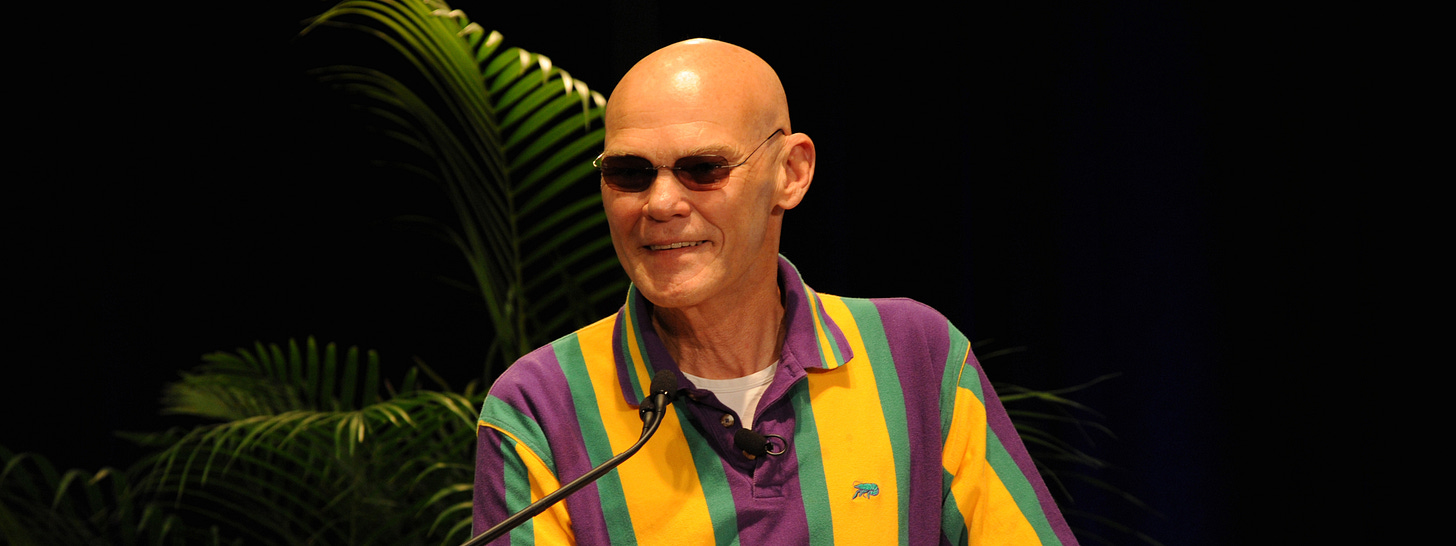
“If you say three things, you don't say anything.”
James Carville is an American political consultant and former US Marine who, let’s say, does not mince words. But this quote conveys an essential (possibly unfortunate) truth about politics: audiences retain messages when they are succinct and focused. Most marketers would say that one message per ad is the only way to be effective. According to Carville, two messages are the limit for a political crowd.
From YouTube to EveryoneTube
A recent article from the BBC reveals the hidden side of the world’s biggest streaming platform. It contains some mind-blowing stats, including the fact that the vast majority of YouTube's estimated 14.8 billion videos have almost never been seen. This vast underbelly consists of highly personal video content that’s invisible to users who have trained the algorithm to suggest conspiracy-filled rabbit holes, unboxing mega-hauls, and 1980s music videos (guilty as charged!).
Most videos on the platform have a handful of views each, but their quotidian banality or their quirky charm makes them a constantly updated record of how societies across the world are evolving. As the chatbots like to say, it’s a treasure trove. And if you’re curious to see more of these random vids appear in your field, the article shares a way to hack the algorithm. There’s something truly democratic about how YouTube allows anyone with a smartphone to record fragments of their lives and share them with the world today as well as the anthropologists of the future. Now if only we could block up all those rabbit holes…
From jingles to singles
Slate’s Hit Parade podcast takes an in-depth look at songs from the Billboard charts over the last seven decades. This two-parter, called I’d Like to Teach the World to Buy (episode two is here) explores the long history of commercial jingles becoming hit singles.
Musical hooks and snappy slogans have been the perfect ingredients for ads and earworms ever since pop music and soda pop first separated teens from their money in the 1950s, with this famous Coca-Cola commercial being the peak of pop pop (the peak in question being a hilltop in Italy).
As Hit Parade host Chris Molanphy puts it, “A surprising number of hits across chart history got their start in advertisements: the Carpenters song that was originally a promo for a California bank. The ’70s country-pop smash by a character who didn’t exist, and was selling you sliced bread. The Sting song that began as a Japanese beer jingle. The Chris Brown song that sneaked a chewing-gum slogan into the chorus.”
Deliverball
In Brazil, the alternative to Amazon is called Mercado. No, that’s not a different river and rainforest, it’s an Argentinian online marketplace with fast home delivery. So when the company’s ad agency was asked to make interactive soccer stadium adboards for the brand, they came up with a perfect solution: a rapid ball dispenser when a player runs over to take a corner kick.
As this Instagram post explains, the adboards generated more online buzz (40 million organic views!!!) than the big game where they first appeared. Now that’s brand equity delivery. Or, like the South American futbol commentators say. “GOOOOOOOOOOOL!!!!”
Did you enjoy this issue of Discomfort Zone? You can comment directly in the Substack app or drop me a line by emailing me at john@johnbdutton.com.
And why not connect with me on LinkedIn if you haven’t already?
FOMO food research and writing by Silvia Todea, editing by John Dutton.
Legal disclaimers:
All images in this newsletter that are not the property of the author are used with permission or reproduced under the fair use provisions of the Canadian Copyright Act while giving appropriate credit.
The content published in this newsletter represents the private views and opinions of John B. Dutton and are not in any way connected to his role with the National Film Board of Canada.






